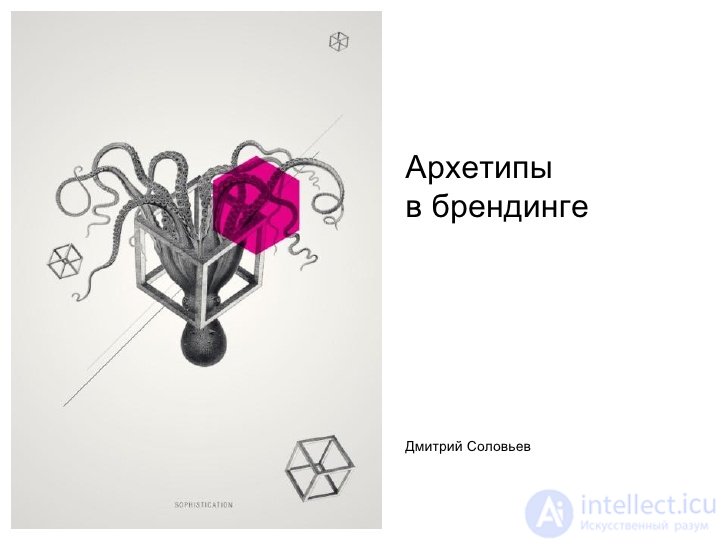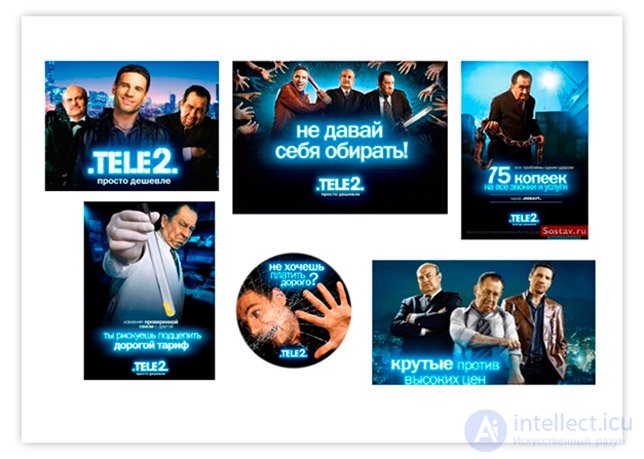Lecture

The authors rethought the coordinate system of Synovate Censydiam (presentation of the Synovate Censydiam model) and proposed to distribute the brand positioning along two axes with four main human incentives: “Belonging to a group” versus “Independence and Self-Realization”, “Stability and Control” against “Risk and Changes” .


In these axes in the four territories, the authors have twelve archetypes. Each archetype is described in detail, it has several levels, values, visual and behavioral codes. The brand can be attributed to one archetype.

A detailed description of the system with examples disassembled can be found in the presentation on the method or book of Carol Pearson and Margaret Mark “Hero and Rebel. Creating a brand with the help of archetypes.
The way to create a brand with archetypes is questionable. After reading the book "Hero and Rebel" leaves a double impression - on the one hand, the authors offer a flexible and interesting method, on the other - turn it into a cumbersome car, which is impossible to use.
The main remark boils down to the fact that the brand can not be "invested" in the cells that are described by the authors. If you recall Jung, he treated the archetypes flexibly, they looked like cloud models, and here they were rigid, unwieldy metal structures. Attempting to classify brands with archetypes turns into violence against reality. One gets the feeling that many examples are far-fetched - for example, a brand can be simultaneously attributed to different archetypes (and, one wonders, where does the accuracy of positioning come from here).
Any classification method requires discipline. The danger lies in the fact that you can begin to solve the method of problems for which it is not intended. In the case of archetypes, you can fall into the trap and begin to evaluate everything around them with their help - in this case, the world around us becomes depleted and turns into an unprincipled model of role-playing game with classes of characters and the constant danger of breaking the rules of the game.
It is interesting to read about common cultural codes in myths, advertising and society. But the authors chose the wrong path - with a powerful tool, they made a dry code of questionable rules and unnecessary classification out of it. The archetypes here have almost no relation to the collective unconscious - it’s rather behavioral models, classes, and these are always characters. While Jung noted that the archetype can be not only personality traits, but rather a theme, a motive, a plot, and behavioral traits. The method proposed by the authors is no longer suitable for creating, but for clarifying the positioning of an already existing brand and, if taking archetypes as a set of visual images, for analyzing advertising communication.
The operator changed the nature of communication and corrected the images in advertising. The old communication flirted with themes from the nineties, and the main characters in the advertisement were mafiosi, with whom various amusing incidents took place.
Old communication codes: black humor; lads; brute force, not mind; the desire to tightly control costs; power; "Family clan" - good for their own, dangerous for others; aesthetics of crime comedies.

In the new Tele2, the mafia has matured and is entering a new European life - they began to work with the mind, not with their fists.

Codes of new communication: European conciseness; mind instead of power; reasonable spending (message: spending less is better, but not because with big spending you will be considered *** ***, but because it is more reasonable); smart control; sympathy; smiles; openness (not a closed family, but an open community).
The old image of Tele2 is the archetype of a crude, totalitarian Ruler with a pronounced Shutovskaya component in communication. The new archetype is the same Ruler (but at a new level - more democratic and open), with a large share of the Sage. Tele2 begins to work for consumers, who are expressed by the archetypes of the Seeker (they want self-realization, reduce unreasonable consumption) and the Sage (rational people), with a large content of Innocent qualities (the desire of heaven on earth, convenience and comfort in the life of communication). The Jester archetype continues to play an important role in communication - it is the sticking agent of an internal family and adds simplicity and gaiety to communication.
This video tells about the wrong use of the new image:
Mafiosi refuses his power and holds a party "on the sly", which, of course, does not correspond to the character - the mafia will not adapt or reduce their pleasure.
In fact, it is necessary to abandon the classification proposed by the authors, and approach the brand from the standpoint of common to all of humanity, then the method can make a novelty in marketing.
Conclusion: this tool is suitable for exploring the topic, for getting some insights, but for serious use in marketing a specific classification is too coarse. It is better to read Jung
Comments
To leave a comment
SMM Social Media Promotion
Terms: SMM Social Media Promotion